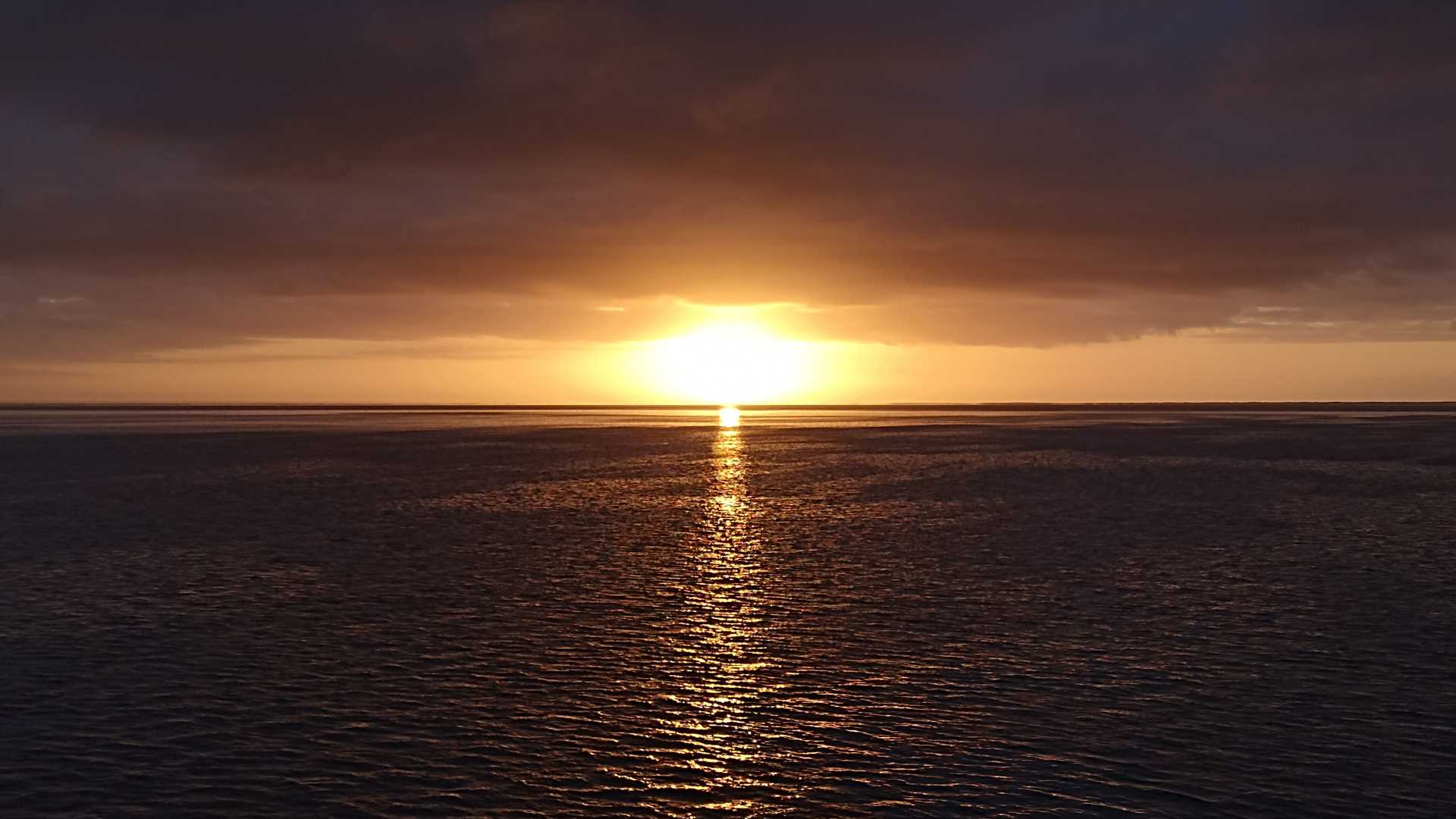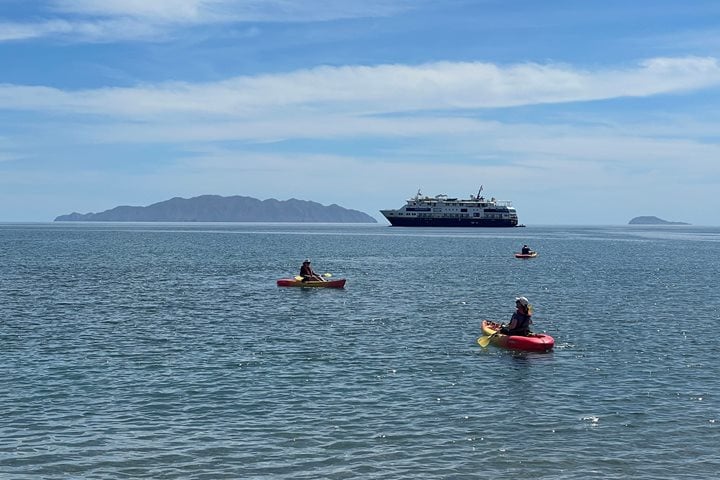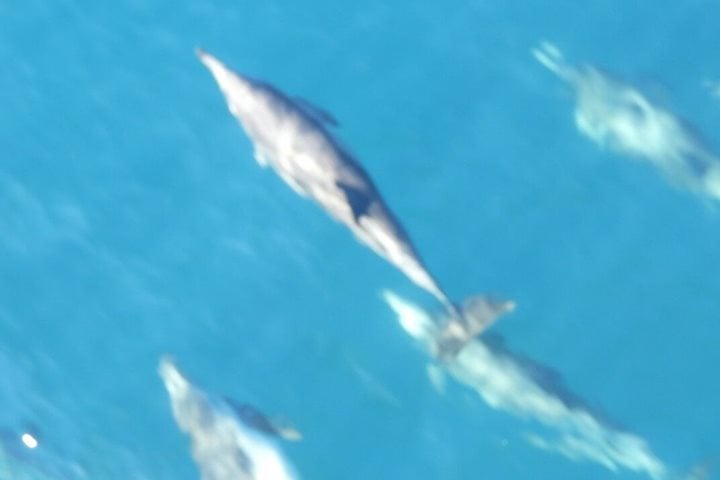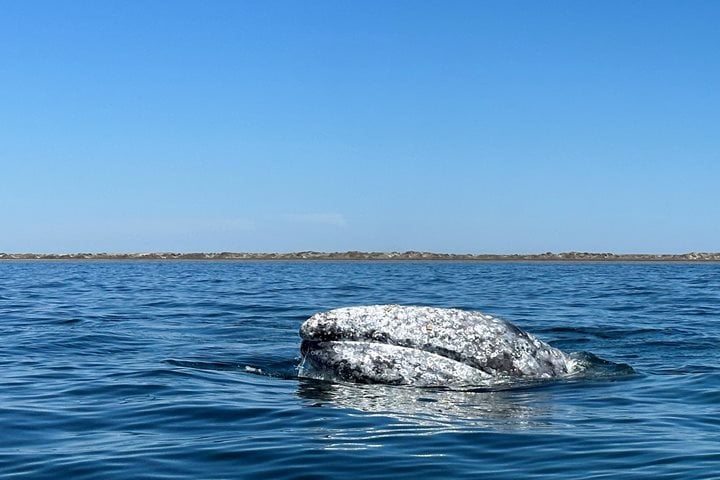As the sun began to illuminate the skies over Bahia Magdalena this morning, National Geographic Venture pulled anchor and approached the dock in Puerto San Carlos. As we sat down to another bountiful breakfast, brown pelicans and frigatebirds gathered excitedly around the fishing vessels alongside us at the dock, drawn by the promise of an easy meal. Exhilarated by the previous day’s thrilling wildlife encounters, everyone was ready for another day among the magnificent and graceful gray whales.
Today’s destination was the far northern reaches of Bahia Magdalena, near Boca la Soledad. Here the warm waters of the protected lagoon cut through the sandy barrier islands and exchange with the open Pacific. We boarded buses for the trip north since the narrow channels are too shallow for National Geographic Venture to navigate. Along the way, we passed endemic creeping devil cactus, dozens of osprey nests, and the agricultural communities of Ciudad Constitución and Ciudad Insurgentes, where an aquifer allows fields of asparagus and artichokes to grow from the desert soil. In Puerto Lopez Mateos, a trio of festive dancers greeted us as we prepared to board local pangas to whale watch.
We headed out on calm, glassy water and shortly found several pairs of gray whale mothers and calves slowly cruising the lagoon. Some of the calves were only a few weeks old, and we observed them mimic their mothers’ behavior. As we witnessed the close bonds between them, we were transfixed. The sounds of whale breath regularly broke the quiet morning air. After visiting the waters of Bahia Almejas yesterday, where gray whales were actively mating, we now found ourselves in the “nursery,” where we could observe the result of the previous winter’s lovemaking. In addition to wonderful whale viewing, we also saw some bottlenose dolphins swim by and had the opportunity for a close look at the mangroves lining the bay. Bird life was abundant, with pelicans and cormorants diving and roosting in the mangroves, great blue herons hunting from shore, and marbled godwits and long-billed curlews searching for food along the water’s edge.
Time flew by, and we returned to the dock for a lunch break. We enjoyed a traditional Mexican feast of fish, chicken, rice, and beans at a local restaurant as an osprey devoured a fish atop an electric pole just outside. After lunch, some of us opted to return to the ship, while many others headed back to the pangas for a second round of whale watching in the late afternoon. We watched more gray whale mothers and calves glide through the waters, often coming very close to our boats. Once the calves are adequately strong and fattened up, they will follow their mothers on a perilous 6,000-mile northward migration to their feeding grounds in the Arctic. This is the longest migration of any mammal. We soaked up our final moments in the company of these animals as the light grew soft on the expansive and otherworldly sand dunes of Isla Magdalena.
Once everyone was back on board the ship, we gathered for a final recap and dinner, followed by a slideshow of stunning images captured by guests during our incredible week together. It is hard to believe that we will already be parting ways tomorrow, but it has been an excellent week and we will head home with new friends, full hearts, and powerful memories of the beautiful and transformational moments we experienced together. It has been a privilege to explore the diversity of Baja California and its extremely rich waters, and we will carry this very special place with us as we continue our own journeys.







